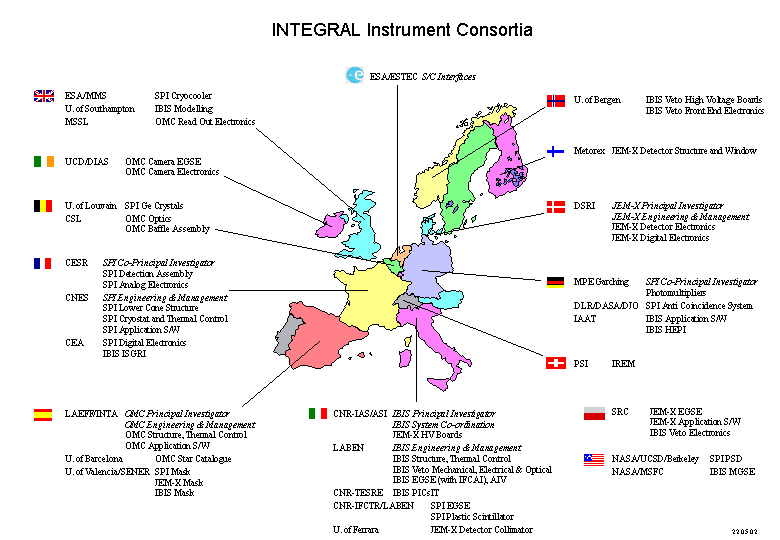 INTEGRAL
Scientific Payload
INTEGRAL
Scientific Payload INTEGRAL
Scientific Payload
INTEGRAL
Scientific PayloadThe INTEGRAL payload consists of two main gamma-ray instruments
Each of them has both spectral and angular resolution, but they are differently optimised in order to complement each other and to achieve overall excellent performance. These instruments are supported by two monitor instruments which will provide complementary observations at X-ray and optical energy bands: The Spectrometer, Imager and JEM-X share a common principle of operation: they are all coded-mask telescopes. The coded-mask technique is the key which allows imaging, which is all-important in separating and locating sources. It also provides near-perfect background subtraction because, for any particular source direction, the detector pixels can be considered to be split into two intermingled subsets, those capable of viewing the source and those for which the flux is blocked by opaque mask elements. Effectively the latter subset provides an exactly contemporaneous background measurement for the former, made under identical conditions.The layout of the payload module has been conceived in terms of a separate science-payload module containing the instruments. This will be integrated and tested independently and later incorporated into the spacecraft as a single unit. The interface to the satellite bus has been designed to be as simple as possible to reduce complexity, time scales and cost.
A particle radiation monitor measures charged particles fluxes of the spacecraft orbital environment hence helping to assess the background and thereby the sensitivity and performance of the instruments.
The 3 sigma continuum sensitivity (AO-1) for the three high energy instruments can be found here. A comparison of continuum sensitivities with other instruments can be found here and narrow line sensitivities here.
